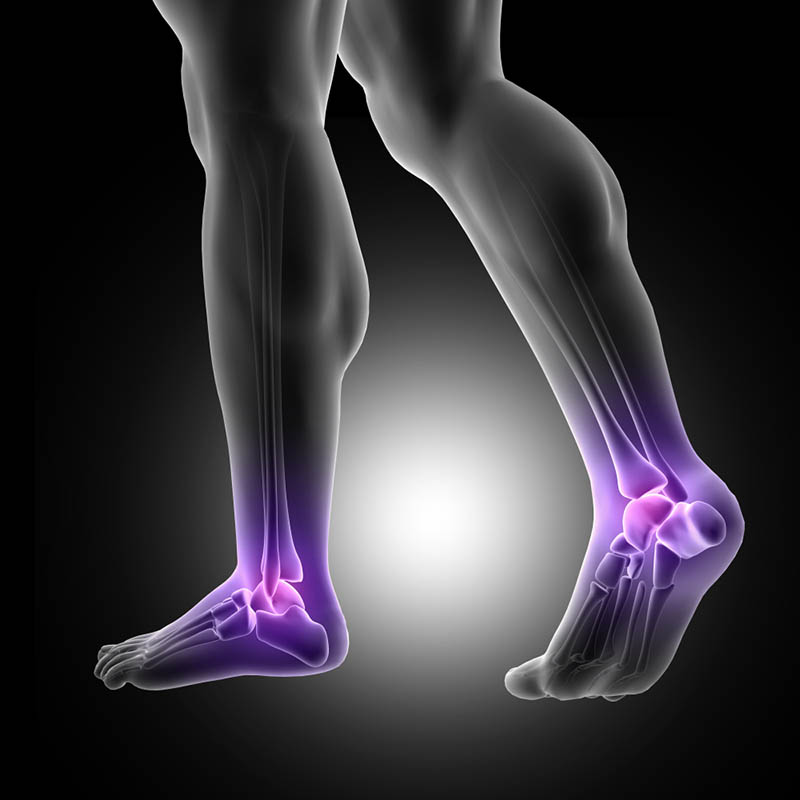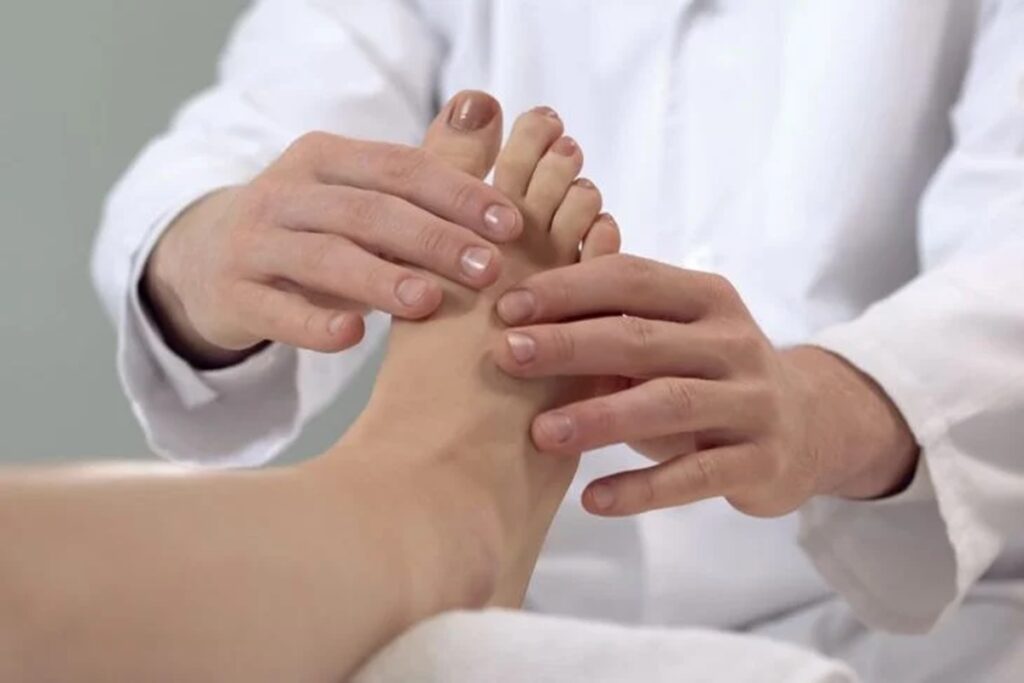Experiencing sharp pain on top of foot when walking can quickly disrupt daily life. This kind of discomfort might start as a small ache and turn into a stabbing sensation with every step. If you’ve noticed persistent or worsening top of foot pain, it's important to understand the possible causes and when to seek help …
Experiencing sharp pain on top of foot when walking can quickly disrupt daily life. This kind of discomfort might start as a small ache and turn into a stabbing sensation with every step. If you’ve noticed persistent or worsening top of foot pain, it’s important to understand the possible causes and when to seek help from a foot and ankle doctor. Early intervention can prevent long-term complications and reduce the risk of more severe injuries. A comprehensive assessment by a trusted specialist ensures you’re not overlooking a serious condition like a stress fracture, nerve entrapment, or foot arthritis.
This guide explains the common conditions linked to sharp pain on top of foot when walking, how to assess symptoms, and how expert care—like what’s offered at Wisconsin Foot & Ankle Clinic—can help you heal.
Common Causes of Sharp Pain on Top of Foot
Top of foot pain can have a wide range of causes, from overuse injuries to structural abnormalities. Identifying the exact source is crucial for finding an effective solution. Below are several common causes that can lead to intermittent sharp foot pain, swelling, and discomfort when walking or standing.
Overuse & Extensor Tendonitis
Repetitive strain or overuse from walking, running, or tight footwear can irritate the extensor tendons on the top of the foot. This condition, known as extensor tendonitis, causes tendon inflammation, pain or tenderness that worsens with activity, and sensitivity to touch. Stretching and modifying activities can help, but a foot and ankle doctor near me may recommend manual therapy or custom orthotics for long-term relief.
Stress Fractures of Metatarsals or Navicular
A stress fracture in the metatarsals or navicular bone often causes pinpoint sharp pain on top of foot when walking. These small cracks in the bone develop from overuse and are common in athletes or people with high arches or flat feet. Imaging tests like x-rays, MRI, or ultrasound are usually needed to confirm the diagnosis.
Bone Spurs and Midfoot Arthritis
Bone spurs can form along the joints due to abnormal pressure or aging. When combined with osteoarthritis or foot arthritis, this can result in reduced joint mobility, stiffness, and persistent pain on the top of the foot. Patients often describe a burning pain or shooting sensation during walking or after rest.
Foot discomfort is a frequent issue, particularly among women, older adults, and individuals with higher body weight. These demographic factors have been linked to a greater likelihood of developing foot-related pain and mobility issues. Recognizing these risk elements can support early intervention and preventive strategies.
Nerve Compression & Peripheral Neuropathy
Conditions like common peroneal nerve dysfunction or peripheral neuropathy can cause numbness, tingling, and sharp pain on top of foot when walking. These sensations may occur with certain movements or while wearing shoes that press on specific areas. Nerve entrapment may also result in burning, numbness or tingling, and pain that radiates up the leg.
Gout, Diabetes-related Edema & Medical Conditions
Top of foot pain can also stem from metabolic conditions like gout, burning feet syndrome, or diabetes-related edema. These conditions lead to swelling, redness, and inflammation that can mimic injuries. Blood tests and a professional assessment are important for confirming diagnosis and guiding treatment.
How to Self‑Assess Your Condition

Knowing how to check your symptoms at home can help determine if you need professional care. However, if your top of my foot pain continues or worsens, it’s best to seek a professional consultation with a healthcare provider.
Identifying Symptoms (stabbing pain when stepping, swelling)
Pain that feels like a stabbing or burning pain on the top of the foot during movement may indicate tendonitis, nerve involvement, or a stress fracture. Accompanying swelling, redness, or tenderness can suggest underlying tendon inflammation or joint irritation. Track when the pain occurs and how long it lasts.
When It’s a Medical Emergency (snapped feeling, foot deformity)
A snapped feeling, inability to bear weight, or visible foot deformity may signal a severe injury or rupture. These situations require immediate attention from a foot and ankle doctor. Do not delay care, especially if signs of infection such as fever or increasing redness develop.
Quick Home Checks (palpation, gait test)
Gently pressing on different areas of the foot (palpation) may help you identify sensitive spots. Watch how your gait changes when walking barefoot versus in shoes. If you notice a limp or shifting weight to avoid sharp pain on top of foot when walking, seek an early professional assessment.
Diagnosis by a Foot and Ankle Doctor
Proper diagnosis is the first step to lasting relief from top of foot pain. An experienced foot and ankle doctor will perform a physical assessment and use diagnostic tools to identify the root cause.
Physical Exam Techniques
Your doctor may assess range of motion, perform gait analysis, and check for localized tenderness or swelling. This biomechanical assessment helps determine if arch abnormalities, poor footwear, or a muscular imbalance is causing your pain.
Imaging Tools: X‑ray, MRI, Ultrasound
X-rays help detect bone spurs or fractures, while MRI and ultrasound visualize soft tissues and detect nerve entrapment or tendon tears. Imaging provides a complete picture, guiding your tailored treatment plan.
Typical Consultation with a Foot and Ankle Doctor
During a visit to Wisconsin Foot & Ankle Clinic, your foot and ankle doctor near me will collect a thorough history, perform a physical examination, and order necessary imaging tests. You’ll receive personalised care and education on both short-term and long-term treatment solutions.
Treatment & Relief Strategies
Managing sharp pain on top of foot when walking often starts with Conservative Therapy. Your treatment plan will vary depending on your diagnosis, activity level, and lifestyle.
R.I.C.E. Method Tailored for Top‑of‑Foot Pain
Rest, Ice, Compression, and Elevation are useful for managing inflammation and tendon inflammation. Compression socks, ice packs, and a walking boot may reduce pain and swelling early on.
Supportive Footwear & Orthotics
Many cases of foot pain are connected to abnormal foot mechanics. Wearing poorly fitted footwear can make existing conditions worse—or even trigger new problems. Supportive, properly fitted shoes help reduce irritation to foot joints and surrounding soft tissue. It’s important to remember that issues can affect not just bones but also the nerves, tendons, ligaments, and muscles in the foot.
Wearing supportive footwear with proper cushioning can prevent further irritation. Custom orthotics are often recommended by a foot and ankle doctor to correct arch abnormalities or distribute pressure evenly across the foot.
Physical Therapy & Stretching Exercises
Targeted exercises, manual therapy, and joint mobilization help restore function and reduce discomfort. You may be guided through stretches to relieve extensor tendonitis, build strength, and improve flexibility.
Medication, Injections & Managing Underlying Conditions
Over-the-counter NSAIDs, anti-inflammatories, and corticosteroid injections can reduce top of foot pain. If the pain is due to gout or systemic inflammation, your healthcare provider will focus on controlling the root condition.
When Surgery Is Required
If Conservative Therapy fails, surgical options may be necessary. Surgery may address bone spurs, nerve entrapment, or midfoot arthritis. Our team provides a complete explanation of benefits, risks, and timelines during your consultation.
How Wisconsin Foot & Ankle Clinic Can Help
At Wisconsin Foot & Ankle Clinic, we understand how disruptive sharp pain on top of foot when walking can be. We provide expert diagnosis and personalised care to relieve symptoms and prevent recurrence.
Expert Diagnosis by a Fellowship‑Trained Foot and Ankle Surgeon
Dr. Donald T. McDonald uses the latest tools—MRI, ultrasound, and biomechanical assessment—to diagnose your condition precisely. As a fellowship-trained foot and ankle doctor, he creates tailored treatment plans based on your diagnosis and lifestyle.
Conservative Therapy Options for Top‑of‑Foot Pain

Our clinic emphasizes Conservative Therapy before surgery. This includes custom orthotics, gait adjustments, stretching routines, and home remedies like R.I.C.E. and manual therapy.
Advanced Surgical Solutions When Needed
For persistent or structural issues, we offer minimally invasive surgery, nerve decompression, and reconstructive techniques. These procedures aim to restore mobility and reduce persistent foot pain.
Personalized Treatment in a Patient‑Focused Setting
We offer shorter wait times, one-on-one appointments, and a strong emphasis on education and follow-up. Our independence allows us to offer flexible referrals and more time for regular foot check-ups and preventive tips.
Preventing Recurrence
After recovery, it’s essential to maintain foot health to avoid recurrence of top of foot pain. Prevention includes adjustments to daily habits and footwear.
Proper Shoe Fit & Support Tips
Use shoes with good arch support, roomy toe boxes, and shock-absorbing soles. Avoid high heels or tight shoes that can irritate tendons and nerves on the top of the foot.
Gradual Activity Increase & Work‑load Management
Whether returning to running or walking, increase your load gradually. Take breaks, and log your progress to avoid a sudden spike in physical demand that could trigger another stress fracture or flare-up.
Regular Stretching & Strengthening Routines
Stretch regularly and follow a maintenance routine even after symptoms resolve. Include stretches and exercises for calves, ankles, and toes to maintain balance and foot health.
Finding the Right Foot and Ankle Doctor Near Me
Searching for a foot and ankle doctor near me can feel overwhelming. Knowing what to look for helps you choose the best provider for your needs.
What to Look For: Fellowship‑trained specialists
Choose someone with credentials in foot arthritis, nerve entrapment, and surgical treatment. Fellowship training ensures a broader understanding of complex conditions and advanced therapies.
Questions to Ask during Your First Visit
Inquire about your likely diagnosis, treatment steps, recovery timeline, and whether imaging tests or physical therapy will be included. A quality provider will support early intervention and guide you with evidence-based information.
Conclusion
If you’re struggling with sharp pain on top of foot when walking, don’t wait to get help. Ignoring symptoms could lead to worsening conditions like foot arthritis, nerve dysfunction, or long-term instability. At Wisconsin Foot & Ankle Clinic, we’re here to deliver high-quality care with compassion, precision, and lasting results.
FAQs
Why am I getting stabbing pains on the top of my foot?
Stabbing pain can come from stress fractures, nerve entrapment, or extensor tendonitis. It’s important to get a professional consultation for an accurate diagnosis.
What does tendonitis on top of the foot feel like?
It usually feels like sharp pain on top of foot when walking, especially when flexing the toes or wearing tight shoes. It may also cause swelling and tenderness.
What does a stress fracture on top of the foot feel like?
A stress fracture often causes pinpoint pain that worsens with weight-bearing and improves with rest. You might also feel localized swelling and discomfort when pressing on the area.







